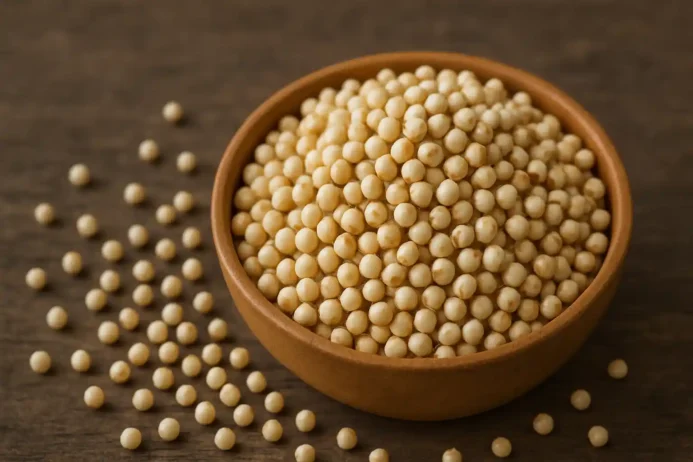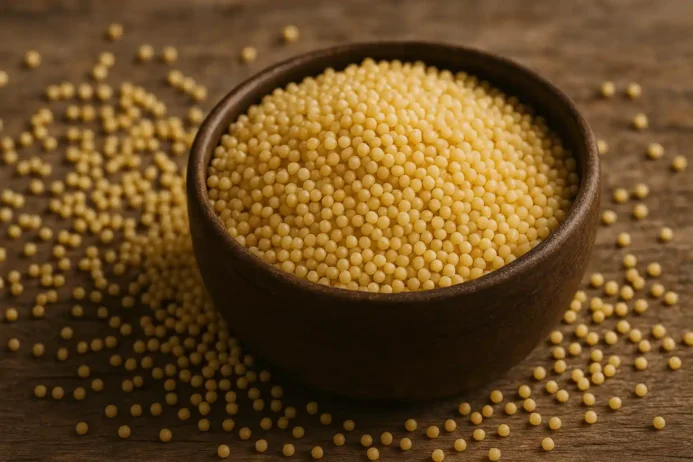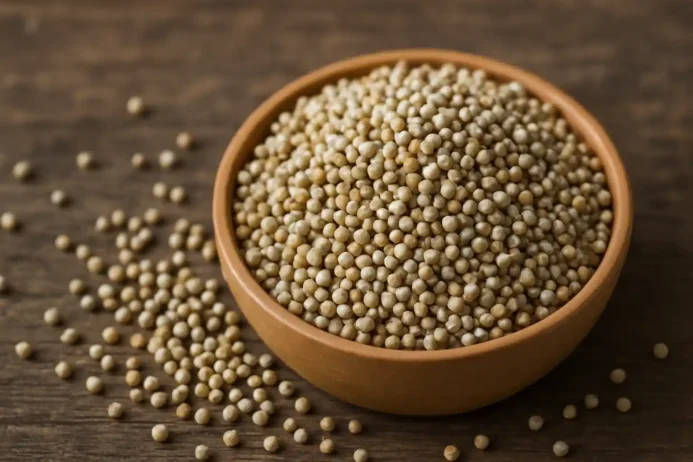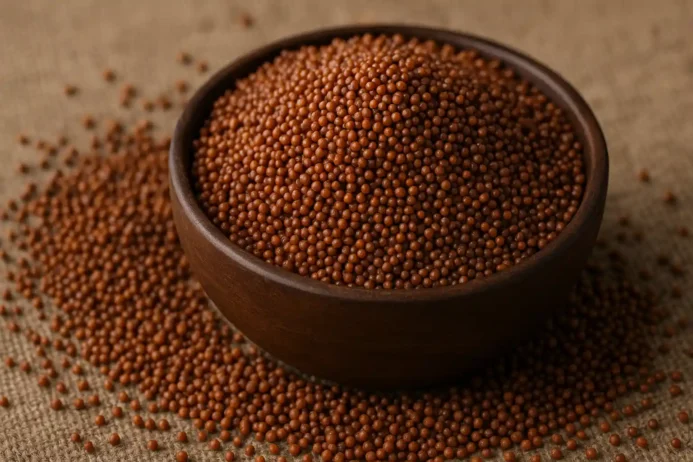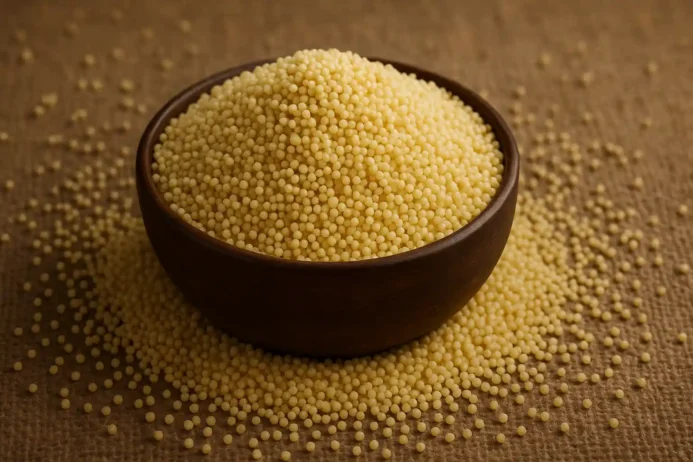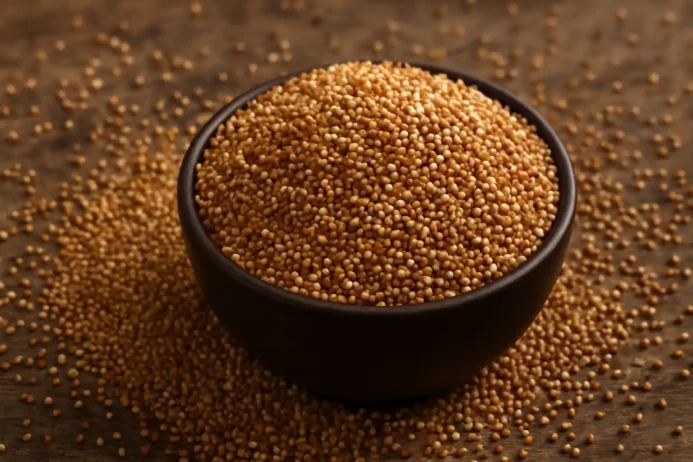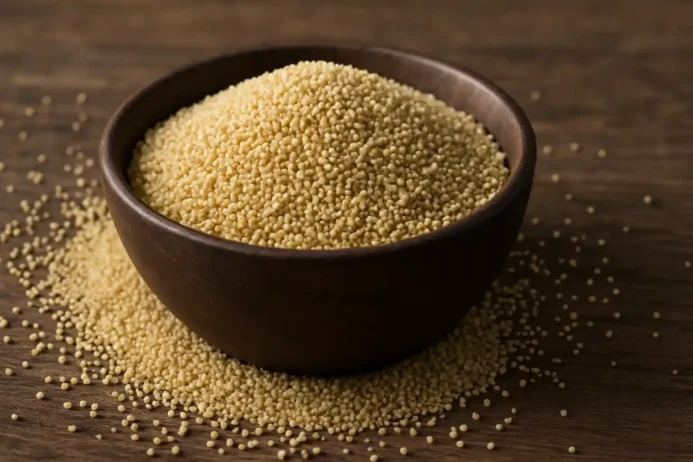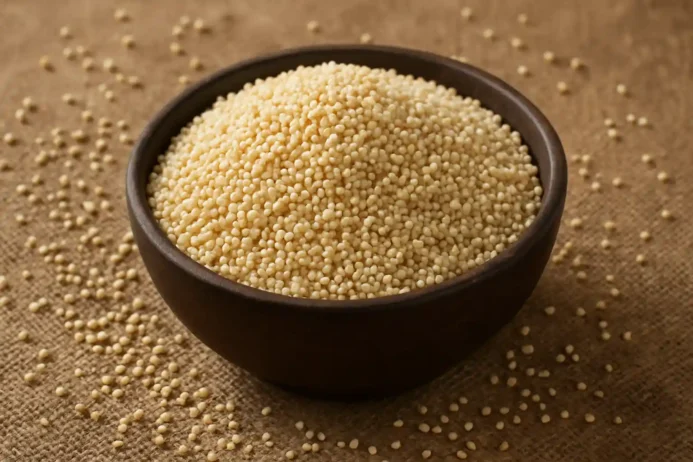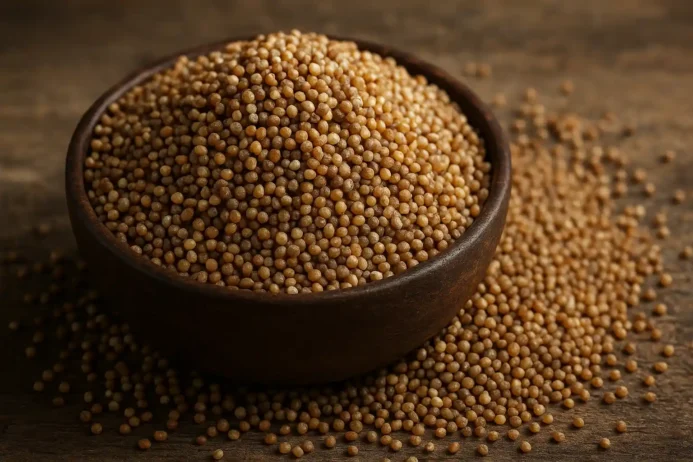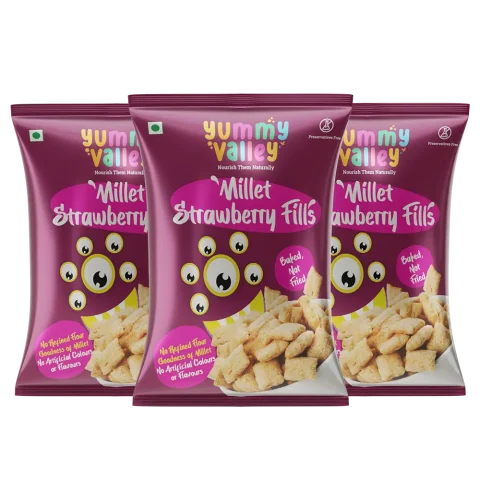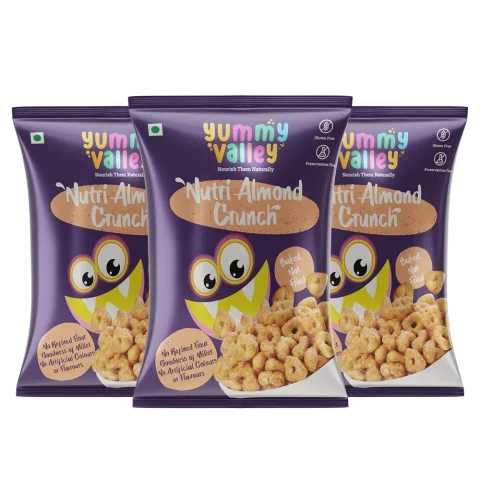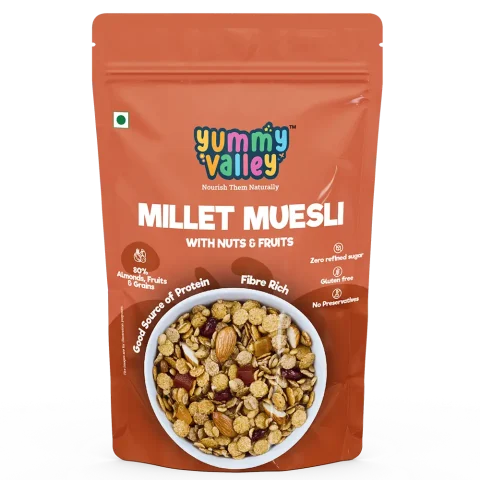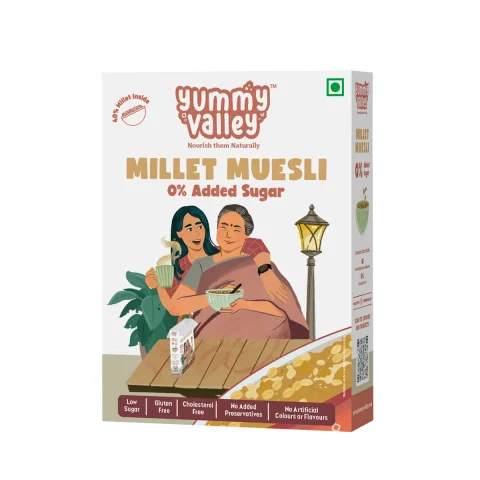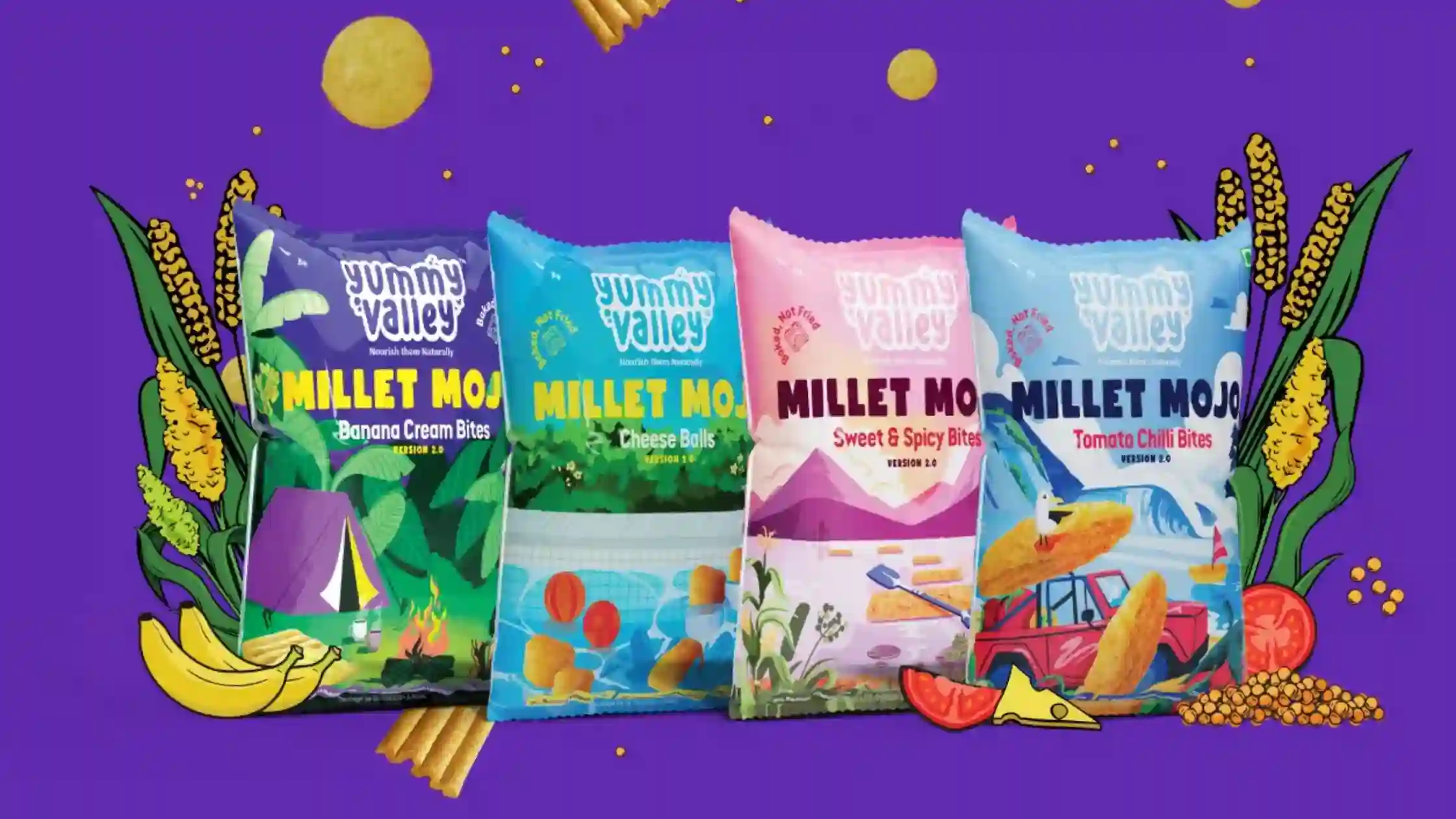
10 Different Types of Millets And Their Benefits
- Published on:
- Last update: 14 May 2025
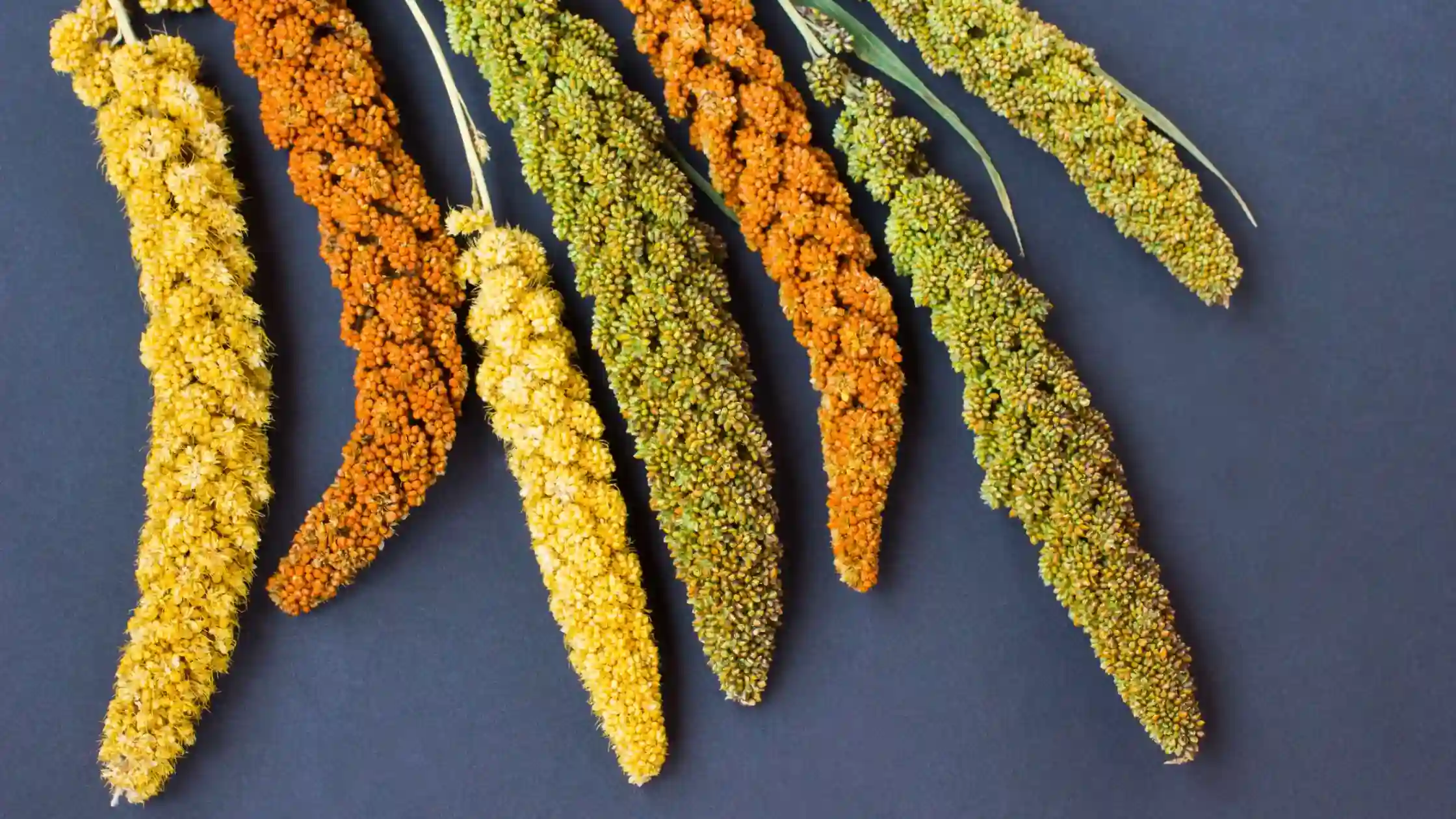
Types of Millets: In the current era, when fast food and processed food products flood the market, there is an increasing need to return to the nutrients hidden in our traditional Indian food culture. In this context, coarse grains, especially millets, are emerging as a blessing.
Table of Contents
ToggleThe declaration of the year 2023 as the ‘International Year of Millets’ by the Government of India is evidence that our centuries-old food heritage is once again establishing its important place on the world’s food map. Let’s learn in detail about these nutritious grains, which not only nourish our bodies but have also been an essential part of our culture and tradition.
What Are Millets?
Millets are small-seeded grasses cultivated as cereal crops for thousands of years. Archaeological evidence suggests that millet cultivation began over 10,000 years ago in East Asia, particularly in regions of what is now China and Korea. These hardy grains thrive in challenging agricultural conditions where other crops might struggle, requiring minimal water and fertility inputs.
Beyond their environmental benefits, millets offer impressive nutritional profiles. They’re naturally gluten-free, fibre-rich, and packed with essential minerals. The resurgent interest in millets stems from both their health benefits and their potential role in sustainable agriculture as we face global climate challenges.
Characteristics of Millets:
- Ancient grains: Part of a 7000-year-old agricultural tradition
- Low water cultivation: Requires very little irrigation (70% less water compared to wheat and rice)
- Weather resistant: Can be grown in drought, heat, and less fertile soil
- Pesticide-free: Most millets are naturally grown without chemical pesticides
- Ecologically friendly: Prevent soil erosion and increase soil fertility
10 Different Types of Millets
1. Sorghum Millet (Jowar)
Sorghum millet is a wholesome, gluten-free grain that has been grown for centuries, particularly in Africa and Asia. It thrives even in tough weather conditions and is packed with fibre, protein, and key minerals like iron, magnesium, and phosphorus. Sorghum also contains natural antioxidants and has a low impact on blood sugar levels, which makes it a smart choice for people managing diabetes.
Characteristics and Uses: Jowar is India’s third major grain. It is a good source of antioxidants and fibre. Being gluten-free, it is suitable for celiac disease patients.
Ayurvedic Importance: Jowar is considered ‘agni deepak’ (ignites digestive fire).
Nutritional Value – 100 grams of jowar contains approximately:
- Protein: 10-11 grams
- Fibre: 6-7 grams
- Iron: 4.4 milligrams
- Calcium: 28 milligrams
- Thiamine: 0.24 milligrams
Regional Names:
- Maharashtra, Gujarat: Juwar
- Tamil Nadu: Cholam
- Karnataka: Jola
- Andhra Pradesh: Jonnalu
- Bihar, Uttar Pradesh: Jondhra
- Madhya Pradesh: Jowar
Traditional Dishes:
- Maharashtra: Juwari bhakri and pithla
- Gujarat: Rotla and Kadhi
- Rajasthan: Jowar roti and garlic chutney
- Andhra Pradesh: Jonnalu rotte (jowar roti)
- Madhya Pradesh: Jowar ki khichdi
Read More: Sorghum Millet: Benefits, Nutrition, Uses and More
2. Proso Millet (China/Barri)
Proso millet, sometimes called common millet, distinguishes itself through its round, yellowish grains. This millet variety has gained substantial popularity in North America, Europe, and Russia beyond its traditional cultivation zones.
From a nutritional standpoint, proso millet delivers an excellent protein package with a favourable amino acid profile compared to other grains. It contains high levels of lecithin, a substance that supports neural health and helps maintain liver function.
Characteristics and Uses: Proso millet is high in protein and antioxidants. It strengthens the digestive system and boosts immunity.
Ayurvedic Importance: Proso millet is considered ‘shitavirya’ (cooling to the body).
Nutritional Value – 100 grams of Proso millet contains approximately:
- Protein: 12 grams
- Fibre: 7 grams
- Iron: 3 milligrams
- Calcium: 14 milligrams
- Magnesium: 114 milligrams
Regional Names:
- Bihar, Jharkhand: Chena
- Punjab: China
- Tamil Nadu: Panivaragu
- Andhra Pradesh: Varigalu
- Maharashtra: Vari
- Gujarat: China
- Uttar Pradesh: China/Bari
Traditional Dishes:
- Bihar: Chena ki roti and curd
- Maharashtra: Vari bhat (special for fasting)
- Gujarat: China ni khichdi
- Tamil Nadu: Panivaragu adai (pancake)
- Punjab: China ki kheer
Read More: Proso Millet: Benefits, Nutrition, Uses and More
3. Pearl Millet (Bajra)
Pearl millet, commonly known as bajra, stands out with its large, bold grains and distinctive bluish colour. As one of the most widely grown millets globally, it’s particularly prevalent across Africa and the Indian subcontinent.
This robust millet variety contains substantial amounts of protein, fibre, and essential minerals, including iron, zinc, and magnesium. What makes pearl millet especially valuable is its remarkably high iron content, making it an excellent dietary choice for addressing anaemia concerns. Additionally, pearl millet contains compounds that help regulate blood sugar levels, beneficial for those managing diabetes.
Characteristics and Uses: Pearl millet is the most widely grown millet in India. It is a drought-resistant crop that gives a good yield even in low water. It is mainly cultivated in Rajasthan, Gujarat, and Haryana.
Ayurvedic Importance: In Ayurveda, bajra is considered to balance ‘vata dosha’. Its consumption in summer provides coolness to the body.
Nutritional Value – 100 grams of pearl millet contains approximately:
- Protein: 11-12 grams
- Fibre: 11-12 grams
- Iron: 8 milligrams
- Calcium: 42 milligrams
- Magnesium: 137 milligrams
Regional Names:
- Rajasthan, Haryana: Bajra
- Gujarat: Bajri
- Maharashtra: Bajri
- Tamil Nadu: Kambu
- Karnataka: Sajje
- Andhra Pradesh: Sajjalu
- West Bengal: Bajra
Traditional Dishes:
- Rajasthan: Bajra roti (rotla) with garlic chutney
- Gujarat: Bajra rotla and lilva kachari vegetable
- Haryana: Bajra khichdi and rabdi
- Maharashtra: Bajra bhakri with thecha (spicy chutney)
- Tamil Nadu: Kambu koozh (pearl millet porridge)
Read More: Pearl Millet: Benefits, Nutritions, Uses and More
4. Finger Millet (Ragi)
Finger millet earned its descriptive name from its appearance—the grain head resembles the shape of human fingers branching out from the palm. Often called ragi, particularly in southern India, this millet variety carries an impressive nutritional pedigree.
Ragi stands out as a calcium powerhouse, containing approximately 8 times more calcium than other grains. This exceptional calcium content makes finger millet particularly valuable for bone health, especially for children, pregnant women, and older adults. Beyond calcium, finger millet provides significant amounts of protein, fibre, and essential amino acids.
Characteristics and Uses: Ragi is considered the best natural source of calcium. It is widely used in South India and hill states. Ragi is also rich in protein, iron, and fibre.
Ayurvedic Importance: Ragi is considered ‘tridosha shamak’ in Ayurveda, which balances all three doshas (vata, pitta, kapha).
Nutritional Value 100 grams of ragi contains approximately:
- Protein: 7-8 grams
- Fibre: 15-20 grams
- Iron: 3.9 milligrams
- Calcium: 344 milligrams
- Magnesium: 137 milligrams
Regional Names:
- Uttarakhand, Himachal: Mandua
- Maharashtra: Nachni
- Tamil Nadu: Kezhvaragu
- Karnataka: Ragi
- Kerala: Kuttu
- Andhra Pradesh: Ragulu
- Odisha: Mandia
Traditional Dishes:
- Karnataka: Ragi mudde (ragi balls) with basar (sambar)
- Tamil Nadu: Kezhvaragu koozh (ragi porridge)
- Maharashtra: Nachni ambil (morning breakfast)
- Uttarakhand: Mandua roti with bhang chutney
- Andhra Pradesh: Ragulu sankati (ragi mudde)
Read More: Finger Millet: Benefits, Nutrition, Uses and More
5. Foxtail Millet (Kakum/Kangni)
Recognisable by its distinctive grain clusters that resemble foxtails, this millet variety boasts an impressive protein content alongside generous amounts of dietary minerals. Foxtail millet deserves recognition for its high iron content and remarkable fibre profile.
The health benefits of foxtail millet extend beyond basic nutrition. Research suggests compounds in foxtail millet may help reduce bad cholesterol levels while supporting good cholesterol. Its low glycemic index makes it suitable for managing blood sugar levels.
Characteristics and Uses: Kangni is rich in protein and minerals. It is abundant in vitamin B12. It aids digestion and controls blood sugar.
Ayurvedic Importance: Kangni is considered ‘madhur’ (sweet) and ‘pitta shamak’ (calms pitta dosha).
Nutritional Value – 100 grams of kangni contains approximately:
- Protein: 12 grams
- Fibre: 8 grams
- Iron: 2.8 milligrams
- Calcium: 31 milligrams
- Magnesium: 81 milligrams
Traditional Dishes:
- Tamil Nadu: Thinai payasam (kheer)
- Karnataka: Navane bisibele bath
- Andhra Pradesh: Koralu undrallu (laddu)
- Gujarat: Kang ni khichdi
- Maharashtra: Rala ki bhakri
Read More: Foxtail Millet: Benefits, Nutrition, Uses and More
6. BrownTop Millet (Jhangora/Andua)
Brown Top Millet, the rare find from India known as korale or andua, flaunts a brown hue with a mild flavour. Low on the glycemic index but rich in thiamine, niacin, and riboflavin, it’s the diabetes manager, blood pressure regulator, and skin health supporter. From porridge to dosa, it’s a culinary delight!
Characteristics and Uses: Brown Top Millet is rich in magnesium and potassium. It is beneficial for heart health and helps in controlling blood pressure.
Ayurvedic Importance: It is considered ‘tridosha santulak’ (balances all three doshas).
Nutritional Value – 100 grams of Brown Top Millet contains approximately:
- Protein: 6.2 grams
- Fibre: 12.5 grams
- Iron: 5 milligrams
- Calcium: 34 milligrams
- Magnesium: 133 milligrams
Regional Names:
- Karnataka: Korale
- Andhra Pradesh: Andappalli
- Tamil Nadu: Puluvaragu
- Maharashtra: Bavto
- Madhya Pradesh: Andua
- Chhattisgarh: Jhangora
- Uttarakhand: Jhangora
Traditional Dishes:
- Uttarakhand: Jhangore ki kheer
- Andhra Pradesh: Andappalli upma
- Karnataka: Korale hittu (jhangora flour) laddu
- Tamil Nadu: Puluvaragu dosa
- Madhya Pradesh: Andua ki roti
Read More: Brown Top Millet: Benefits, Nutrition, Uses and More
7. Barnyard Millet (Sanwa)
Barnyard millet represents one of the quickest-growing millet varieties, reaching harvest readiness in as little as 45 days under favourable conditions. This rapid growth cycle makes it particularly valuable in regions with short growing seasons.
Nutritionally, barnyard millet offers impressive fibre content, among the highest of all millets. This fibre abundance supports digestive health and promotes a feeling of fullness, potentially aiding weight management goals. Barnyard millet also contains significant amounts of iron, calcium, phosphorus, and B-complex vitamins.
Characteristics and Uses: Barnyard Millet is rich in fibre and minerals. It strengthens the digestive system and aids in weight control.
Ayurvedic Importance: In Ayurveda, it is considered ‘shighra paki’ (quickly digestible) and ‘balvardhak’ (strength-enhancing).
Nutrition Value – 100 grams of Barnyard Millet contains approximately:
- Protein: 6-7 grams
- Fibre: 9-10 grams
- Iron: 2.8 milligrams
- Calcium: 20 milligrams
- Phosphorus: 280 milligrams
Regional Names:
- Uttarakhand: Jhangora
- Tamil Nadu: Kudiraivali
- Madhya Pradesh: Sanwa
- Bihar: Sawan
- Andhra Pradesh: Udalu
- Maharashtra: Bhagar/Varai
- Uttar Pradesh: Sanwak
Traditional Dishes:
- Uttarakhand: Jhangore ki kheer (for fasting)
- Tamil Nadu: Kudiraivali pongal
- Madhya Pradesh: Sanwa ke parathe
- Maharashtra: Varai bhat (special for Navratri)
- Uttar Pradesh: Sanwak ki khichdi
Read More: Barnyard Millet: Benefits, Nutrition, Uses and More
8. Little Millet (Moraiyo)
Despite its name suggesting diminutive importance, little millet delivers substantial nutritional benefits. The small, round grains require careful processing but reward the effort with remarkable nutritional density.
The health profile of little millet includes exceptional fibre content that supports digestive health. This millet variety contains phenolic compounds with potential anti-inflammatory properties. Studies suggest that little millet may help regulate blood glucose levels, beneficial for those managing diabetes.
Characteristics and Uses: Kutki is rich in iron and fibre. It improves digestion and helps in weight control.
Ayurvedic Importance: Kutki is considered ‘vata-pitta shamak’ (balances vata and pitta doshas).
Nutritional Value 100 grams of kutki contains approximately:
- Protein: 7.7 grams
- Fibre: 7.6 grams
- Iron: 9.3 milligrams
- Calcium: 17 milligrams
- Zinc: 3.7 milligrams
Regional Names:
- Madhya Pradesh: Kutki
- Tamil Nadu: Samai
- Karnataka: Same
- Andhra Pradesh: Samalu
- Maharashtra: Shama
- Odisha: Saun
- Chhattisgarh: Kutki
Traditional Dishes:
- Madhya Pradesh: Kutki ki khichdi
- Tamil Nadu: Samai upma
- Karnataka: Same bisibele bath
- Chhattisgarh: Kutki ke parathe
- Odisha: Saun pej (porridge)
Read More: Little Millet: Benefits, Nutrition, Uses and More
9. Kodo Millet (Kodra/Varagu)
Kodo millet thrives in harsh conditions where other crops struggle, making it a crucially important grain in drought-prone regions across India and parts of Africa. This environmental resilience translates to nutritional hardiness.
This millet variety delivers substantial amounts of fibre alongside notable quantities of phosphorus, an essential mineral for bone health and cellular energy production. Research indicates that kodo millet contains special polyphenols that may help regulate blood sugar levels and provide antioxidant benefits.
Characteristics and Uses: Kodo millet is prevalent in tribal areas. It is a low-calorie grain that helps in weight loss. It has a high fibre content, which improves digestion.
Ayurvedic Importance: Kodo is considered ‘laghu’ (light) and ‘grahi’ (beneficial for the intestines).
Nutritional Value – 100 grams of kodo contains approximately:
- Protein: 8-9 grams
- Fibre: 9 grams
- Iron: 2.7 milligrams
- Calcium: 35 milligrams
- Vitamin B3: 2 milligrams
Regional Names:
- Madhya Pradesh, Maharashtra: Kodra
- Tamil Nadu: Varagu
- Bihar: Kodan
- Himachal Pradesh: Koda
- Chhattisgarh: Kodo
- Uttarakhand: Kodra
- West Bengal: Kodo
Traditional Dishes:
- Madhya Pradesh: Kodra ki khichdi
- Chhattisgarh: Kodo ke laddu
- Maharashtra: Kodra bhat (kodo rice)
- Tamil Nadu: Varagu kanji (kodo porridge)
- Bihar: Kodan ki roti
Read More: Kodo Millet: Benefits, Nutrition, Uses and More
10. Amaranth Millet (Rajgira)
Amaranth, commonly known as Rajgira in India, is a highly nutritious grain-like seed that has been used in traditional diets for generations. Although it is not a true cereal, it is often grouped with millets because of its similar cooking and nutritional qualities. Rajgira is rich in protein, calcium, iron, and fibre, and it is naturally gluten-free, making it a healthy option for many people.
It is especially popular during fasting periods in India, where it is used to prepare a variety of dishes like chapatis, ladoos, and porridge. Its mild, nutty flavour and high nutrient content make it a valuable addition to a balanced diet.
Characteristics and Uses: Although technically amaranth is a pseudo-cereal, it is often classified with millets. It is an excellent source of protein and calcium.
Ayurvedic Importance: Rajgira is considered ‘snigdha’ (oily) and ‘medhya’ (intellect-enhancing).
Nutrition Value – 100 grams of rajgira contains approximately:
- Protein: 14-16 grams
- Fibre: 7 grams
- Iron: 9 milligrams
- Calcium: 159 milligrams
- Magnesium: 248 milligrams
Regional Names:
- North India: Rajgira/Ramdana
- Maharashtra: Rajgira
- Gujarat: Rajgaro
- Bengal: Marisha
- Himachal Pradesh: Chaulai
- Karnataka: Rajgira dana
- Tamil Nadu: Tandakeerai vidhai
Traditional Dishes:
- North India: Rajgire ke laddu (special for fasting)
- Maharashtra: Rajgira ki puri and sheera (Navratri dishes)
- Gujarat: Rajgara ni puri and shiro
- Punjab: Rajgira halwa
- Bengal: Marisha poli
Check out our Millet Snacks
Comparison of Different Types Of Millet
Nutritional Profile Comparison (per 100g cooked)
| Millet Type | Protein (g) | Fiber (g) | Iron (mg) | Calcium (mg) | Antioxidants, copper, and magnesium |
|---|---|---|---|---|---|
| Pearl Millet | 11-12 | 8-9 | 8-10 | 40-50 | Zinc, B vitamins, magnesium |
| Sorghum | 10-11 | 6-7 | 4-5 | 25-30 | Fibre (g) |
| Finger Millet | 7-8 | 11-12 | 4-5 | 350-450 | Highest calcium content among cereals |
| Foxtail Millet | 10-11 | 8-9 | 2-3 | 30-40 | Riboflavin, thiamine, selenium |
| Proso Millet | 11-12 | 7-8 | 3-4 | 15-25 | Phosphorus, potassium, lecithin |
| Amaranth | 13-14 | 9-10 | 7-8 | 150-160 | Complete protein (all essential amino acids) |
| Barnyard Millet | 6-7 | 9-10 | 5-6 | 20-25 | Lowest calorie content, high phosphorus |
| Kodo Millet | 8-9 | 9-10 | 2-3 | 30-35 | Low glycemic index, high lecithin |
| Little Millet | 7-8 | 8-9 | 9-10 | 15-20 | Essential fatty acids, high copper |
| Browntop Millet | 9-10 | 7-8 | 2-3 | 20-25 | Good vitamin B complex profile |
Millet Types: Growing Conditions & Cultivation Comparison
| Millet Type | Days to Maturity | Rainfall Requirement | Soil Adaptability | Heat Tolerance | Notable Growing Characteristics |
|---|---|---|---|---|---|
| Pearl Millet | 75-90 | 300-500mm | High | Excellent | Thrives in sandy, infertile soils |
| Sorghum | 90-120 | 400-600mm | High | Excellent | Deep root system, drought escape mechanism |
| Finger Millet | 90-120 | 500-900mm | Medium | Very good | Can grow at higher altitudes (up to 2300m) |
| Foxtail Millet | 70-90 | 200-400mm | High | Good | Efficient water use, early maturing |
| Proso Millet | 60-90 | 200-500mm | High | Good | Fastest maturing grain crop, low water needs |
| Amaranth | 90-120 | 400-600mm | Medium | Excellent | Grows across diverse elevations |
| Barnyard Millet | 45-60 | 500-700mm | High | Good | Tolerates waterlogging, fastest to mature |
| Kodo Millet | 100-120 | 400-500mm | Very high | Excellent | Thrives in severely degraded soils |
| Little Millet | 65-90 | 200-500mm | Very high | Good | Tolerates both drought and waterlogging |
| Browntop Millet | 60-75 | 300-500mm | High | Good | Grows on steep slopes and marginal lands |
Types of Millets: Cultural and Historical Significance
| Millet Type | Primary Regions | Historical Significance | Traditional Uses | Storage Life |
|---|---|---|---|---|
| Pearl Millet | Africa, India | The fifth most important cereal crop globally | Flatbreads, porridge, beer, couscous | 1-2 years |
| Sorghum | One of the world’s oldest cultivated grains (8000 BCE) | Africa, Asia, the Americas | Injera (Ethiopia), roti, syrup, alcoholic beverages | 2-5 years |
| Finger Millet | Eastern Africa, India | Documented in Indian texts from 2000 BCE | Mudde (Karnataka), porridge, beer, medicine | 5-10 years |
| Foxtail Millet | China, Korea, Japan | Mexico, Peru, the Himalayan region | Dumplings, porridge, fermented dishes | 2-4 years |
| Proso Millet | Russia, Central Asia, Europe | Sustained nomadic peoples across Eurasia | Kasha, flatbreads, bird seed | 2-3 years |
| Amaranth | Mexico, Peru, Himalayan region | Sacred to Aztec civilisation, forbidden after the conquest | Popped grain, atole, alegría candy | 1-3 years |
| Barnyard Millet | Japan, India, China | Traditional crop before rice dominance in Japan | Emergency food during famines, porridge | 1-2 years |
| Kodo Millet | India | Featured in 3000-year-old Ayurvedic texts | Religious ceremonies, medicinal preparations | 2-3 years |
| Little Millet | South Asia | Ancient tribal food source in India | Steamed dishes, mixed grain preparations | 1-2 years |
| Browntop Millet | Southern India | Security crop in drought-prone regions | Pre-monsoon staple, mixed with other grains | 1-2 years |
Types of Millets And Regional Names
See below how the various types of millets are referred to in different Indian regional languages. To help you identify the names more easily, we’ve included them in their native languages.
| Millet Type | Hindi | Tamil | Telugu | Kannada | Malayalam | Marathi | Bengali | Gujarati | Punjabi |
|---|---|---|---|---|---|---|---|---|---|
| Pearl Millet | Bajra | Kambu | Sajjalu | Sajje | Kambam | Bajri | Bajra | Bajri | Bajra |
| Sorghum | Jowar | Cholam | Jonna | Jola | Cholam | Jwari | Jowar | Juwar | Jowar |
| Finger Millet | Ragi/Mandua | Kelvaragu | Ragulu | Ragi | Muttari | Nachni/Ragi | Marua | Bavto | Mandal |
| Foxtail Millet | Kangni | Thinai | Korra | Navane | Thina | Kang/Rala | Kaon | Kang | Kangni |
| Proso Millet | Barri/Cheena | Panivaragu | Variga | Baragu | Panichamay | Vari | Cheena | Cheno | Cheena |
| Amaranth | Chaulai/Ramdana | Keerai | Thotakura | Harive Soppu | Cheera | Rajgira | Marsa | Rajgaro | Chaulai |
| Barnyard Millet | Sanwa/Jhangora | Kuthiravali | Odalu | Oodalu | Kavadapullu | Bhagar | Shyama | Samo | Swank |
| Kodo Millet | Kodon | Varagu | Arikelu | Harka | Varaku | Kodra | Kodo | Kodra | Kodra |
| Little Millet | Kutki | Samai | Sama | Saame | Chama | Sava | Sama | Gajro | Kutki |
| Browntop Millet | Pedda Korle | Pala Pul | Andakorra | Korale | Pular | Shavan | Shyama | Banti | – |
Health Benefits of Millets
According to some research, there are a heap of millet benefits to the human body. Let’s discuss a few of the benefits of millets.
1. Helpful in Controlling Diabetes
The complex carbohydrates and high fiber content in millets play an important role in controlling blood sugar levels. Due to their low glycemic index, blood sugar levels rise slowly, which is especially beneficial for Type-2 diabetes patients.
Scientific Evidence:
- According to a study by the Indian Council of Medical Research (ICMR), diabetic patients consuming a ragi-based diet had 30% lower blood sugar levels compared to those consuming a wheat-based diet.
- Researchers at the National Institute of Nutrition, Hyderabad found that phytochemicals present in pearl millet and sorghum increase insulin sensitivity.
Dietary Suggestion: For diabetic patients, regular consumption of ragi, kodo, and pearl millet is particularly beneficial.
2. Protect Heart Health
Minerals like magnesium and potassium found in millets help control blood pressure. The fiber and antioxidants found in them help reduce bad cholesterol (LDL), while maintaining good cholesterol (HDL) levels.
Scientific Evidence:
- In a clinical trial in Hyderabad, it was found that people consuming pearl millet daily for 3 months had a reduction of 8.5% in LDL cholesterol and 9.7% in triglycerides.
- According to a study by the All India Institute of Medical Sciences (AIIMS), the amino acid methionine found in ragi plays an important role in protecting against heart diseases.
Dietary Suggestion: For heart patients, consumption of pearl millet, ragi, and foxtail millet is particularly beneficial.
3. Effective in Weight Management
Millets contain high amounts of fiber and protein, which keeps you feeling full for a long time. This reduces hunger and controls excess calorie intake. Also, they are low in calories and fat, which helps in healthy weight management.
Scientific Evidence:
- According to the Indian Nutrition Institute, kodo and barnyard millet contain high fiber (15-20%), which helps in weight loss.
- A study by the National Institute of Nutrition found that people consuming a ragi-based diet feel less hungry and reduce their daily calorie intake by 10-15%.
Dietary Suggestion: For weight loss, consumption of kodo, barnyard millet, and little millet is particularly beneficial.
4. Improve Digestive Health
Soluble and insoluble fiber present in millets help keep the digestive system healthy. It promotes the growth of good bacteria in the intestines, alleviates constipation, and keeps the digestive process regular.
Scientific Evidence:
- According to a study published in the Indian Journal of Gastroenterology, pearl millet contains prebiotic fiber that promotes good bacteria in the intestines.
- Resistant starch found in barnyard millet helps improve intestinal health and reduces symptoms of Irritable Bowel Syndrome (IBS).
Dietary Suggestion: For digestive problems, consumption of barnyard millet, sorghum, and little millet is beneficial.
5. Strengthening the Immune System
Nutrients like vitamin E, vitamin B complex, zinc, and selenium found in millets help strengthen the immune system. The presence of antioxidants protects against damage from free radicals and enhances the body’s disease-fighting ability.
Scientific Evidence:
- Polyphenols found in pearl millet and ragi increase the activity of immune cells.
- Phytochemicals found in foxtail millet and sorghum enhance the body’s anti-inflammatory capacity, strengthening the immune system.
Dietary Suggestion: To boost immunity, consumption of ragi, pearl millet, and foxtail millet is beneficial.
6. Bone and Teeth Health
Millets, especially ragi, are an excellent source of calcium. They also contain phosphorus, which is essential for bone and teeth health. Regular consumption can reduce the risk of bone diseases like osteoporosis and maintain teeth strength.
Scientific Evidence:
- Ragi contains 3 times more calcium than cow’s milk (344 mg/100g).
- According to a study by the Indian Council of Medical Research, women who regularly consume ragi have a 30% lower risk of bone weakness after menopause.
Dietary Suggestion: For bone health, regular consumption of ragi and pearl millet is beneficial.
7. Prevention of Anemia
Millets contain abundant iron, which helps prevent anemia. They also contain vitamin B-complex, which enhances iron absorption. This is especially helpful in addressing iron deficiency in women and adolescents.
Scientific Evidence:
- Pearl millet contains approximately 8 milligrams of iron per 100 grams, which is significantly higher than wheat (3.5 milligrams) and rice (0.7 milligrams).
- Little millet contains the highest iron (9.3 milligrams per 100 grams).
- According to a study, vitamin C present in pearl millet and ragi increases iron absorption by up to 30%.
Dietary Suggestion: For prevention of anemia, consumption of pearl millet, little millet, and amaranth is beneficial.
8. Anti-Inflammatory Properties
Antioxidants and phytochemicals found in millets help reduce inflammation in the body. They help relieve arthritis and other inflammation-related problems. Regular consumption can reduce chronic inflammation.
Scientific Evidence:
- Phenolic compounds like ferulic acid and sinapic acid found in sorghum and pearl millet have strong anti-inflammatory properties.
- The anti-inflammatory capacity of a compound called squalene found in amaranth has been proven in several studies.
Dietary Suggestion: For relief from inflammation, consumption of amaranth, pearl millet, and sorghum is beneficial.
9. Skin and Hair Health
Protein, vitamin E, and other antioxidants found in millets help improve skin and hair health. They help keep the skin healthy and glowing, as well as contribute to hair strength and growth.
Scientific Evidence:
- Silicon elements found in foxtail millet help increase hair strength and shine.
- Vitamin E found in ragi and pearl millet provides moisture to the skin and prevents premature wrinkles.
Dietary Suggestion: For skin and hair health, consumption of foxtail millet, ragi, and pearl millet is beneficial.
10. Improve Mental Health
Tryptophan and other amino acids found in millets promote the production of serotonin in the brain, which helps improve mood. Vitamin B-complex present in them helps reduce stress and improve sleep quality.
Scientific Evidence:
- Magnesium and vitamin B complex found in millets help reduce stress and anxiety levels.
- Amaranth is rich in tryptophan, which aids in the formation of serotonin and reduces symptoms of depression.
Dietary Suggestion: For mental health, consumption of amaranth, ragi, and pearl millet is beneficial.
How to Incorporate Millets into Your Diet
Millets’ versatility makes them easy to use in various traditional and modern recipes. Here are some ideas:
- Breakfast: Try millet porridge or millet cereals for a fibre-rich start to your day.
- Lunch: Swap rice with millets in salads, Buddha bowls, or biryanis.
- Dinner: Experiment with millet-based rotis, soups, or casseroles.
- Snacks: Use popped millets for energy bars or cookies.
Importance of Millets
Millets pack a nutritional punch and help the environment too. They’re good for you. And for the planet. They are health-boosting and full of fibre, proteins, and important minerals. They help digestion and manage diseases like diabetes and heart disease. For people with gluten allergies, they’re a godsend. They hardly need any water and can grow in dry places. This makes them a green choice for farmers and the Earth. If we eat millets regularly, we’ll be healthier and support eco-friendly farming, too.
Side Effects of Millets
Millets are popularly known to be healthy and have been consumed for several centuries; however, as the saying goes, ‘excess of anything good is harmful. ’ it has certain side effects too, especially for people with certain sensitivities. Here are some of the possible side effects:
1. May cause thyroid issues
These sneaky goitrogens can mess with your thyroid, slowing it down and causing issues. They interfere with thyroid hormone production, messing with your metabolism, growth, and development. Low thyroid levels mean fatigue, weight gain, depression, hair loss, and cold intolerance. So, if you’ve got thyroid problems or take thyroid meds, chat with your doctor before diving into millets.
2. May cause digestive discomfort
Fibre overload can leave your tummy feeling puffy, with gas and discomfort stealing the show. It’s good for your digestion, but too much can bring bloating and cramps and even reduce nutrient absorption. So, if you’re prone to digestive issues, limit millet or up your water intake to avoid dehydration.
3. Weighty concerns
Sure, they’re gluten-free champs, but going overboard might invite some surprise weight buddies. Gluten-free doesn’t always mean healthy; some products can pack more calories, fat, and sugar. Watch those portions and nutritional labels, and balance your diet with other food groups.
4. Allergic Reactions
Millets might trigger allergic reactions in sensitive folks. While generally low-allergenic, they can still cause itching, swelling, hives, or even breathing difficulties. If you have a history of food allergies, be cautious with millet.
5. Kidney Concerns
They could increase the risk of kidney stones for some due to their oxalate content. For those prone to kidney stones, either limit millet or stay hydrated to flush out excess oxalates.
It is thus important to consume it moderately as well as within a balanced diet to maximize its benefits and minimize the risks.
Conclusion
Millets bridge the gap between tradition and health-conscious diets with their ancient appeal. With more people becoming aware of millets’ nutritional benefits and versatility, their status in Indian households is slowly returning. The many different names that we use for these foods in various Indian languages is perhaps a reminder of our regional identity and also helps to popularise these superfoods. This perhaps can be considered as the fundamental reason why millets will continue to be a relevant food into the future, no matter which name we tag to them.
FAQs on Types of Millets
Which Millet has the highest Fibre?
Several studies have recorded that Kodo millet and small Millet have 37% to 38% dietary fibre, which is the highest among cereals.
Which Millet is closest to Rice?
Foxtail Millet is the closest to rice. It is most commonly used as a substitute for rice across the world.
Which types of millet are good for diabetes?
It has been observed that foxtail millet (also known as kakum/kangni) is suitable for people with type 2 diabetes. It has a high iron content and helps in regulating blood sugar levels. It’s best to swap rice with foxtail millet for the most effective results.
Share this post:


